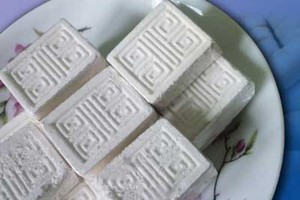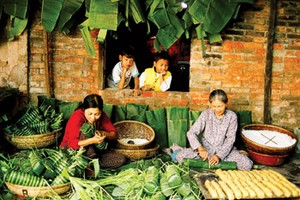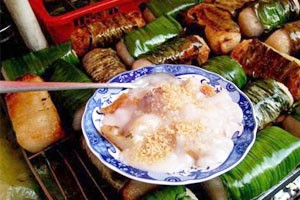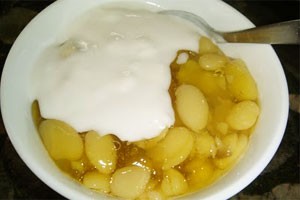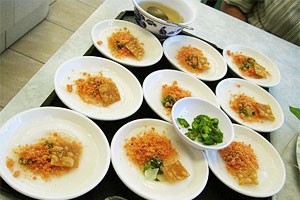From simple and cheap ingredients, but through a very meticulous and careful process, fried pie has become an indispensable food in the New Year days, especially with people who live in the countryside.
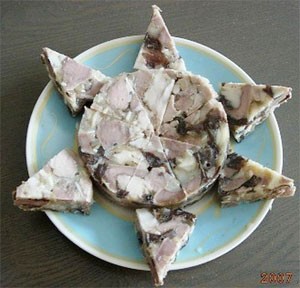
In my hometown, whether at the poor time in the past or the modern convenience time today, each family still do not forget to make fried pie on the Tet holiday. When the Tet is about to come, all women in my village would be busy preparing banana’s leaves to pack the pie. That makes the Tet become more special: simple but really warm.
My mother used to tell that when choosing banana’s leaves, it would be best if the leaves are not too old or too green. The old ones are so brittle that they will be easily torn while the green ones do not have a particular smell of banana’s leaves. After choosing the right leaves, we have to clean them and dry over the fire to make the leaves more resistant.
The ingredients to make the pie are also very simple, they are just some kinds of “secondary meat” such as the meat from the head, the fat, the skin and a little meat from the feet of the pig.
Richer people can add some more ingredients like the tongue or the lean meat, along with cloud-ear mushroom, shiitake mushroom and some spices like peppercorn and fish sauce…Especially, a good dish of fried pie must have some fat so that it would not be burned or too dry.
Because of simple but special ingredients, this fried pie has various name like fat pork paste (to distinguish with lean pork paste) or pig’s head paste (that is frying meat of the head with cloud-ear mushroom).
Ear, lean and skin would be slice into thin and small pieces and then fry them without oil until these pieces become twisted. When they all stick together, add some more spices, and cloud-ear mushroom.
Frying the meat requires us to be clever and we need to know how to make the meat pleasant to taste, not too rare or too overdone. We also need to know when the skin is sticky enough to turn off the fire so that the mixture would not be separated.
The final step is pressing. My mother told that this was the most important step, which could make the dish become special. It would be easier to use the specialized mould (like the one to press the lean pork pie), but my mother prefers the traditional way: using the bowls with various shapes and sizes to wedge the pie.
Because this is the dish for Tet, my mother does not only appreciate the form but also the taste of the pie. A successful fried-pie slice is the one which would not be crumbled when being cut, and has a natural crunchy taste. She also told that if we put a banana leaf under the meat before pressing, the pie will have a sweet-smelling of the leaf, just like the lean pork pie.
Although today we are not so poor as in the past, people in my hometown still make fried pie like a traditional dish for the Tet holiday. Maybe that is the reason why the dish has become a particular food for the Tet in the countryside. Therefore, it reminds me so much about my family, my mother and the cold piercing wind in the north every time I taste.

